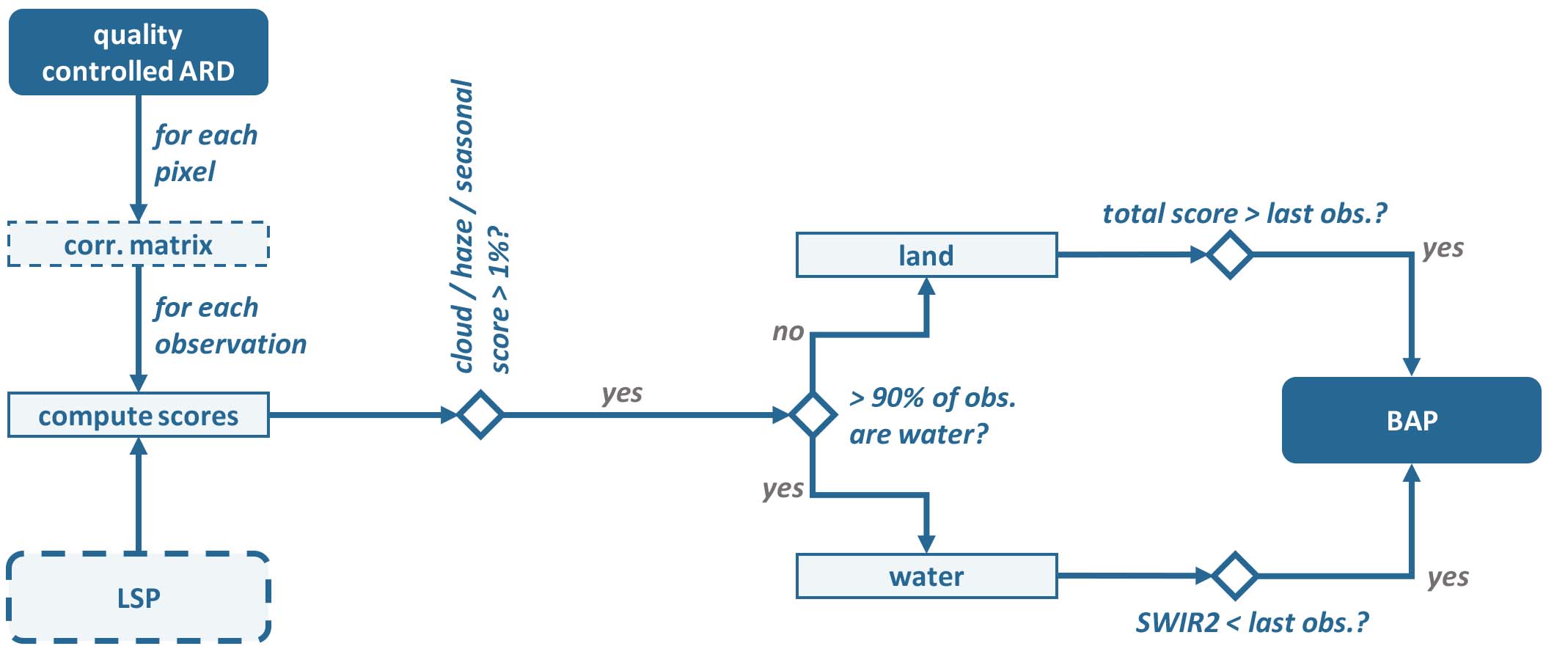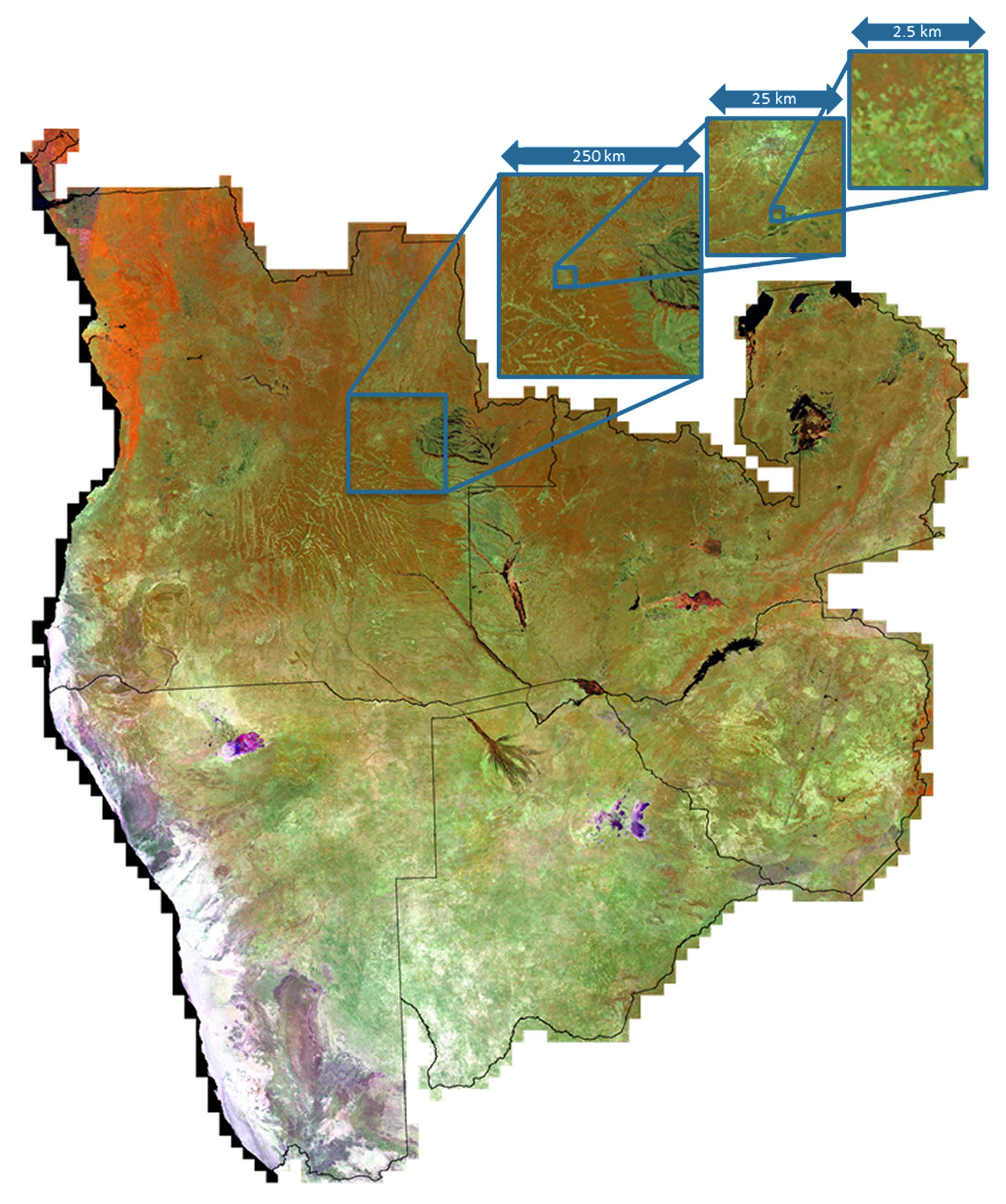Level 3 Compositing
The Level 3 Compositing submodule generates temporal aggregations of Level 2 data to provide seamless, gap free, and highly Analysis Ready Data (hARD) over very large areas. hARD are excellent input for many machine learning algorithms, e.g. for land cover / change classification purposes.

Figure Processing workflow of the Level 3 Compositing submodule.
The aggregation is performed using a parametric weighting scheme based selection algorithm based on Griffiths et al., commonly known as pixel-based compositing. The selection can either be performed using static target dates or using dynamic target dates as outlined in Frantz et al., known as phenology-adaptive compositing. In the latter case, a Land Surface Phenology (LSP) dataset is required.
Only highest-quality pixels are considered, i.e. observations with very low cloud or haze score are discarded. Similarly, observations with very low seasonal score are discarded, which ensures that Level 3 products are representative of the season of interest (can be switched off). Over persistent water, the compositing algorithm is switched to minimum shortwave-infrared (SWIR2 band) compositing, as the parametric weighting selection is often noisy due to the high temporal variability of water reflectance.
A glimpse of what you get:

Figure Phenology Adaptive Composite (PAC) using Landsat 5–7. The End of Season composite (2018) was computed for Angola, Zambia, Zimbabwe, Botswana and Namibia.